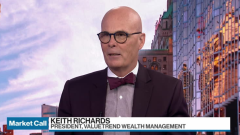Sep 29, 2023
China Manufacturing Activity Expands for First Time Since March
, Bloomberg News
(Bloomberg) -- China’s manufacturing activity returned to expansion for the first time in six months, adding to signs that some parts of the economy are finding their footing again.
The official manufacturing purchasing managers’ index rose to 50.2 this month from 49.7 in August, the National Bureau of Statistics said Saturday, beating economists’ expectations and climbing above the 50 level that separates expansion from contraction.
A gauge of non-manufacturing activity — which captures the services and construction sectors — rose to 51.7 from 51 in August, also above the median forecast in a Bloomberg poll.
Investors and analysts have been looking for evidence that China’s recent stimulus measures are shoring up an economic recovery that has been challenged this year by weak consumer and business confidence and an ongoing property crisis. Along with looser monetary policy, the country has also seen an uptick in local government borrowing for infrastructure as authorities look for way to support growth.
“The PMI reading reinforces our view that the economy starts to have stabilized,” Raymond Yeung, chief economist for Greater China at Australia & New Zealand Banking Group Ltd., said in an email. “A bright spot is the strong reading of input price, suggesting the deflationary pressure is at least relieved a bit.”
Recent indicators had been suggesting a bottoming out of the worst of the slowdown. Industrial profits rose in August for the first time in more than a year, while a drop in exports has eased and credit has grown more than expected.
Even so, the economy’s outlook remains uncertain. Economists cut their forecasts for gross domestic product expansion in the latest Bloomberg survey, now seeing the country just about meeting its growth target of around 5% for the year.
President Xi Jinping on Thursday vowed to step up efforts to meet the country’s annual economic and social development targets at a speech marking the 74th anniversary of the founding of the People’s Republic of China. He pledged to boost macroeconomic controls and expand domestic demand in its push for “continuous improvement” of economy, without announcing any specific measures.
While describing the September non-manufacturing PMI reading as “sub-par,” Yeung noted the services sector does benefit from domestic tourism. He upgraded China’s economic growth forecast to 5.1% for 2023 in recent weeks, from 4.9%.
--With assistance from Bei Hu.
(Updates with economist’s comment from fifth paragraph)
©2023 Bloomberg L.P.






